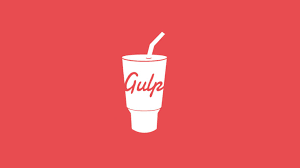This article is for you if you’re looking for a tutorial that makes no assumptions and will list every step to install Gulp - from the beginning, in order, without any gaps.
This guide was also made on a Mac. A few steps will vary for Windows.
Gulp.js - the streaming build system is a JavaScript task runner that can automatically take care of redundant tasks for you. Like so many other useful tech tools, Gulp has no “getting started for beginners” guide to speak of. Their getting started guide, in reality, begins at step 6 or so. If you already know how Node and npm work and have everything installed, it’s great - but the beginner is only left more confused and frustrated.
I’m going to quickly summarize a few important concepts. Feel free to scroll back up to this after you’ve started making some progress for clarification.
- Node.js - an environment which enables running server-side JavaScript for the web.
- npm - a package manager for Node.js. A tool that allows you to quickly and easily set up local Node environments and plugins.
- Local vs. Global - Node.js is installed globally, but Gulp and all of its plugins will be installed locally on a per project basis.
- Task Runner - A task runner like Gulp automates all your processes so you don’t have to think about them. Gulp requires a package.json and gulpfile.js.
#automation #node #sass
